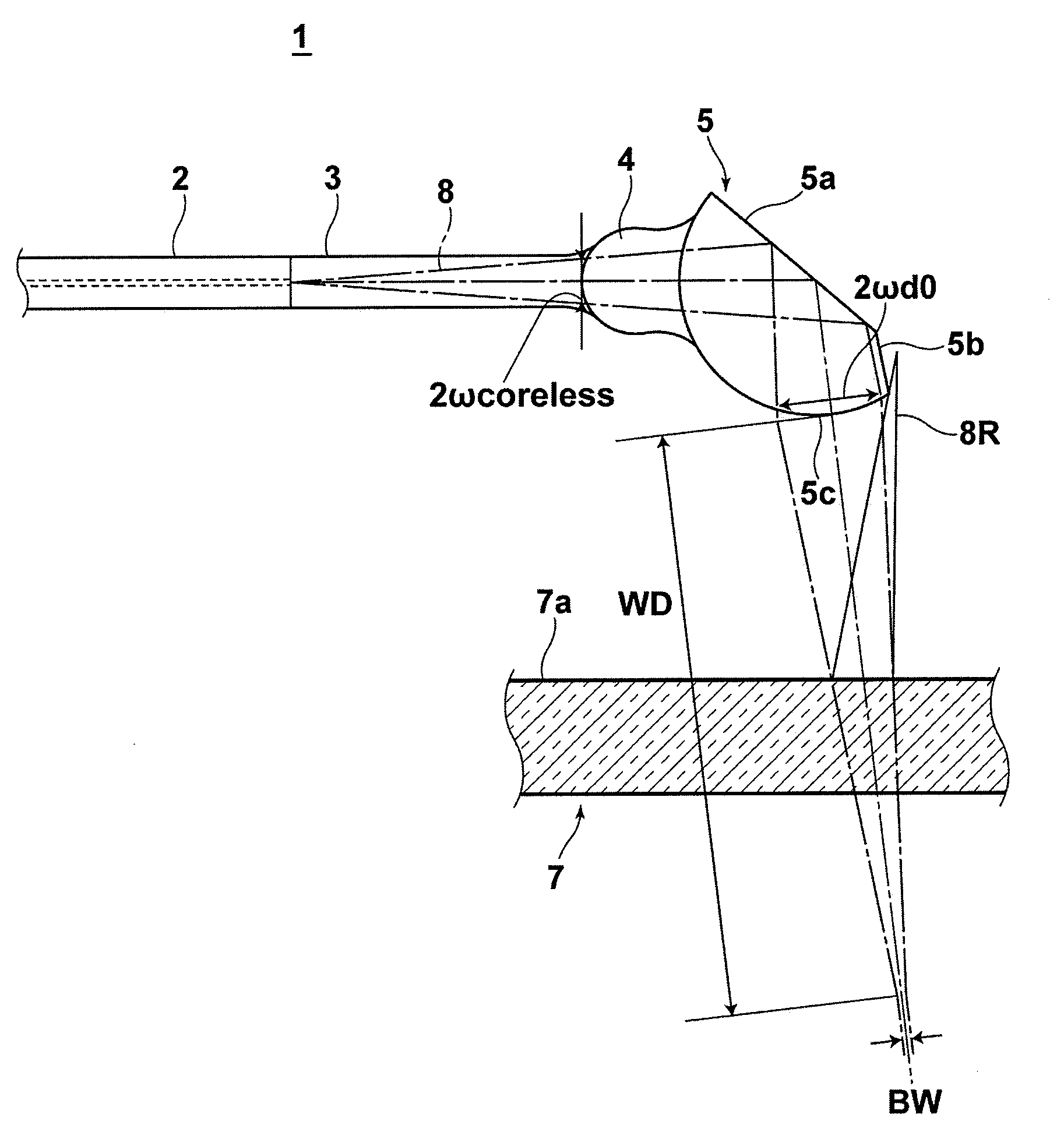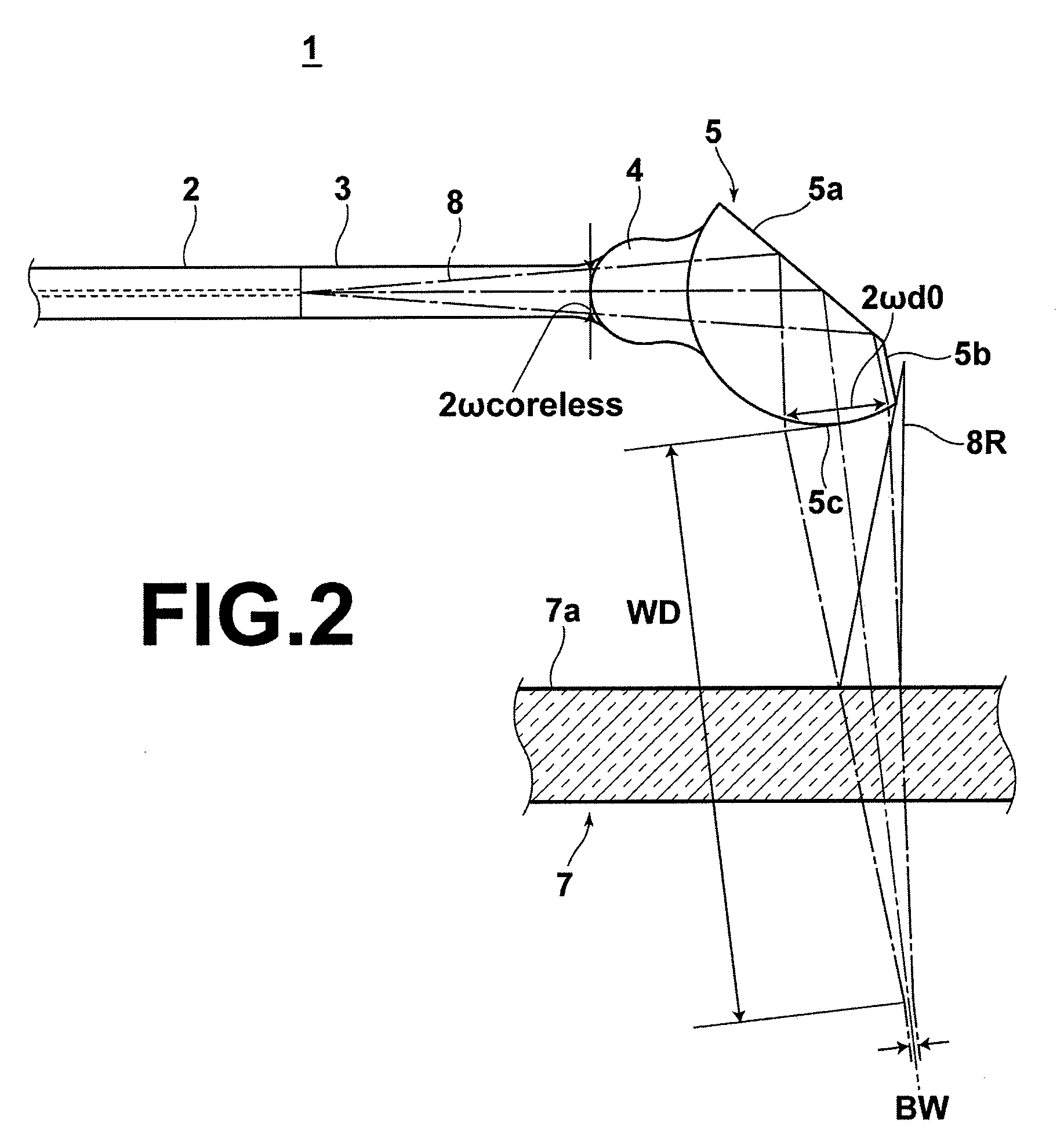OCT probe for eliminating ghost images
a technology of oct probe and ghost image, which is applied in the field of oct probe for eliminating ghost images, can solve the problems of difficult to image the biological functions of subjects, low spatial resolution of ultrasound endoscopic probes, and use of x-rays, and achieves the effect of preventing the generation of ghost images due to multiple reflections, and reducing the size of the spo
- Summary
- Abstract
- Description
- Claims
- Application Information
AI Technical Summary
Benefits of technology
Problems solved by technology
Method used
Image
Examples
first embodiment
[0072]In the above formula, θ cut is the angle at which the reflecting surface 5a is formed with respect to the longitudinal axis of the second optical fiber 3. The light output angle θ out is determined by the reflecting surface forming angle θ cut, based on the above formula. Note that in the first embodiment, the light output angle θ out is set to approximately 7 degrees, for example.
[0073]In addition, the beam radius ωdo (refer to FIG. 2) of the light beam at the light input / output surface 5c of the lens 5 can be derived by the Formula 4 below:
[0074]ωd0=ω0·1+(λ·d0π·n·ω20)2
wherein: ω0 is the core radius of the first optical fiber 2; λ is the wavelength of the light beam; n is the refractive index of the second optical fiber 3 with respect to the wavelength λ; and d0 is the distance that the light beam propagates from the end of the second optical fiber 3 to the lens 5.
[0075]Accordingly, the location at which the planar surface 5b is formed on the lens 5 is most preferabl...
second embodiment
[0099]Here, a light absorbing adhesive is employed as the adhesive 10. In the second embodiment, the adhesive 10 is employed as the reflected light sheath entrance preventing portion. Carbon black may be added to impart light absorbing properties to the adhesive 10. Because the outer periphery of the lensed optical fiber 1 is covered by the adhesive 10, even if the reflected light 8R, which is reflected at the inner surface 7a of the sheath 7 (refer to FIG. 7) enters the lensed optical fiber 1, the reflected light 8R is absorbed by the interface between the lensed optical fiber 1 and the adhesive 10. Accordingly, generation of ghost images is prevented.
PUM
| Property | Measurement | Unit |
|---|---|---|
| refractive index | aaaaa | aaaaa |
| refractive index | aaaaa | aaaaa |
| outer diameter | aaaaa | aaaaa |
Abstract
Description
Claims
Application Information
 Login to View More
Login to View More - R&D
- Intellectual Property
- Life Sciences
- Materials
- Tech Scout
- Unparalleled Data Quality
- Higher Quality Content
- 60% Fewer Hallucinations
Browse by: Latest US Patents, China's latest patents, Technical Efficacy Thesaurus, Application Domain, Technology Topic, Popular Technical Reports.
© 2025 PatSnap. All rights reserved.Legal|Privacy policy|Modern Slavery Act Transparency Statement|Sitemap|About US| Contact US: help@patsnap.com



